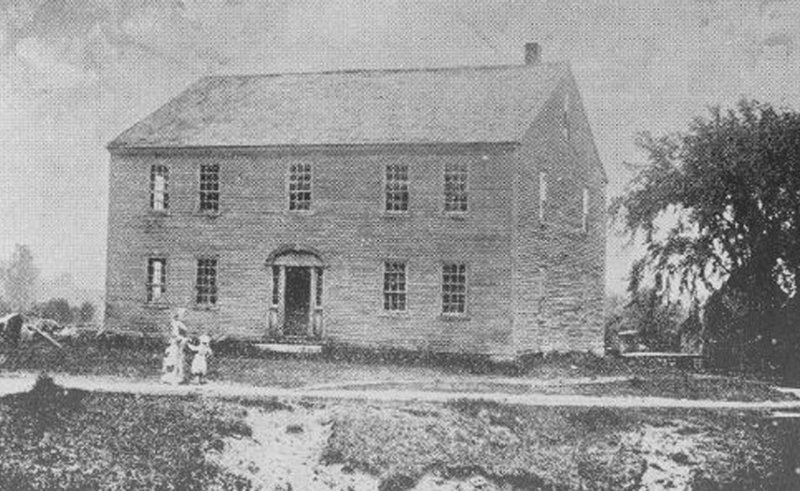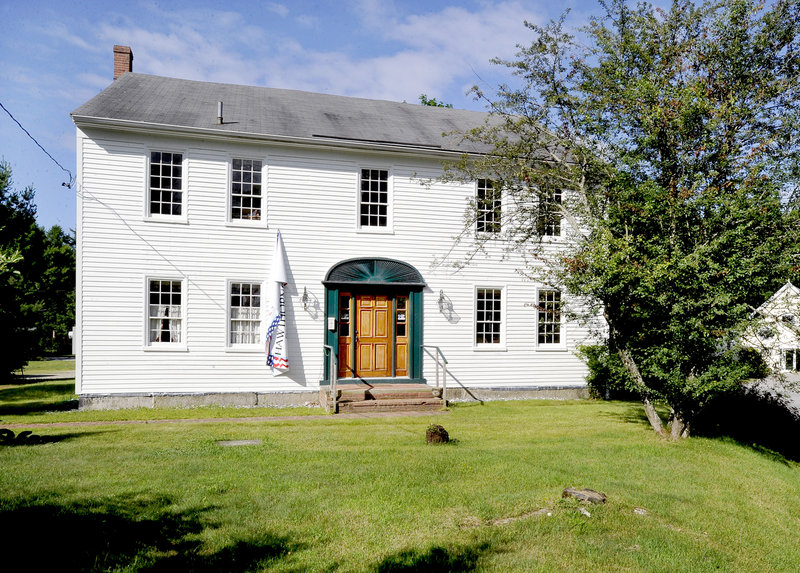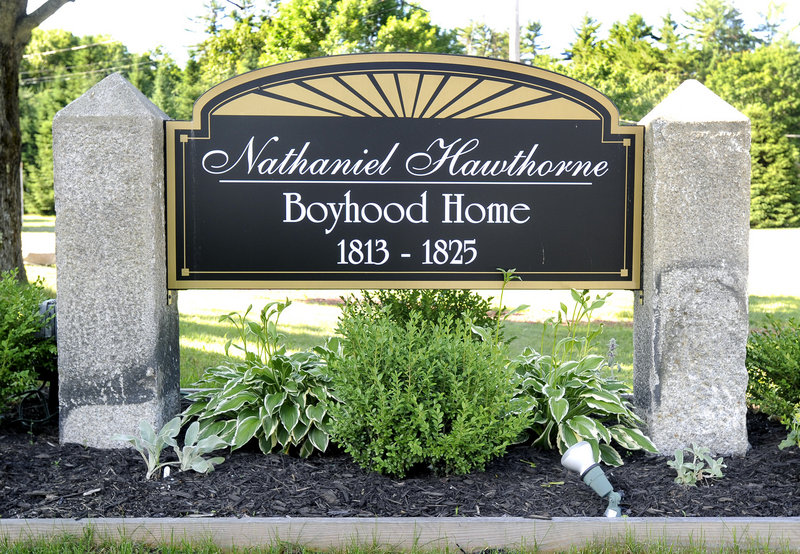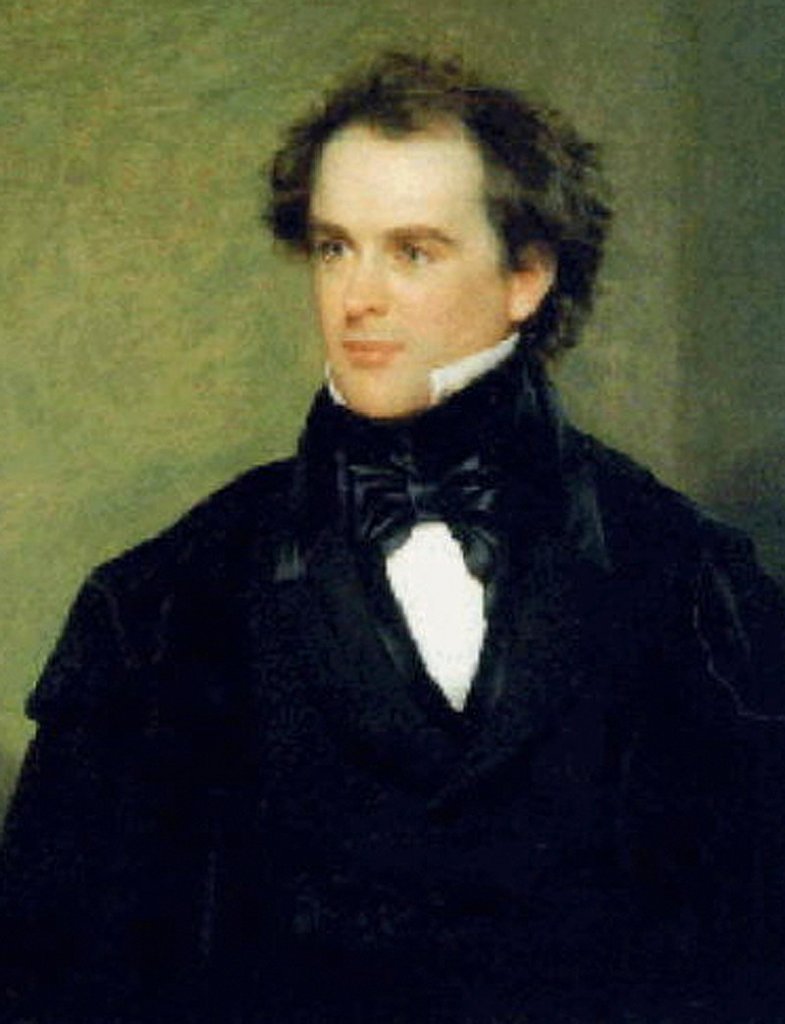RAYMOND — Behind the frozen-in-time boyhood home of Henry Wadsworth Longfellow, the Maine Historical Society in Portland has a single file on Nathaniel Hawthorne’s life on Sebago Lake.
The literary giants were classmates at Bowdoin College in Brunswick, where the college library bears both of their names. But compared with Longfellow’s well-documented childhood in Maine, little is known about the time Hawthorne spent in the house on Cape Road in Raymond that was built for his family two centuries ago this year — or sometime thereabouts.
“We don’t really have great or accurate records,” said John Manoush, a trustee of the Hawthorne Community Association, which has taken care of the house since 1921.
Regardless, the association will celebrate the building’s bicentennial on Saturday with a souped-up version of its annual strawberry festival, featuring a talk by David Johnston, a builder in Gorham who has made repairs to the house, and an actor dressed as Hawthorne who will mingle with the guests and muse about life in Raymond in the early 19th century.
Hawthorne, born in Salem, Mass., in 1804, was 8 or 9 years old when he, his two sisters and his mother moved to Raymond. His father, a sea captain, had died of yellow fever in Suriname a few years earlier. His death sent Hawthorne’s mother into seclusion.
Her brother, Richard Manning, who lived in Raymond, offered to build her a house on his land.
Hawthorne’s mother and sisters mostly remained there through his college years, but it’s unclear how much of the author’s youth was spent in Raymond rather than Salem, where he was sent to prepare for college.
Hawthorne was clear about which place he preferred. Samuel Pickard cites evidence from the young writer’s letters to family members in “Hawthorne’s First Diary with an Account of its Discovery and Loss,” published by Houghton Mifflin in 1897.
In March of 1820, he wrote from Salem to his younger sister in Raymond: “How often do I long for my gun, and wish that I could again savageize with you. But I shall never again run wild in Raymond, and I shall never be so happy as when I did.”
In August 1821, around the time he started college, he wrote: “There are few people of so much constancy as myself. I have preferred and still prefer Raymond to Salem, through every change of fortune.”
In addition to letters and stories recounted by friends and family members, Hawthorne’s life in Raymond is recorded in excerpts from a diary, sent from a childhood friend named William Symmes to the Portland Transcript, a Maine newspaper that published them around 1871.
Pickard, who was a part-owner of the paper, later compiled them into a book, along with context about Hawthorne’s life in Raymond.
Hawthorne’s son, however, doubted that the excerpts from the purported diary — whose original copy was never found — were penned by the same hand as “The Scarlet Letter” and “The House of the Seven Gables.”
Pickard, too, later questioned their authenticity, according to a 2003 biography of Hawthorne by Brenda Wineapple.
Most of that’s beside the point for the 100-plus members of the Hawthorne Community Association, none of whom are history experts or literary scholars.
They’re local residents who like having the historically significant building in their neighborhood and, therefore, have an interest — as trustee Frank Chambers put it — in “keeping the walls from falling down.”
After all, little except the walls has remained the same since Hawthorne’s mother moved out of the house around 1825, when her son graduated from college.
After the house was used as a stagecoach tavern for a period of time, its tall chimneys were removed and its interior was gutted, and the two-story home became a meetinghouse.
It remains an open hall, to the chagrin of some visitors, who enter expecting at least a replica of what the house looked like when Hawthorne lived there.
Manoush, of the Hawthorne Community Association, said, “It would be nice to come in and have it be like old Sturbridge Village. ‘This was his study, and this is where he’d sit and read at night.’“
But with barely enough funding to maintain the building, he said, a reconstruction of the family’s home probably won’t happen, and there isn’t enough information to do it accurately anyway.
Still, the building’s link to history is a source of pride for the residents of Raymond, and has been for a long time. An article about Hawthorne’s life in an 1871 issue of Harper’s New Monthly Magazine — a photocopy of which is in the historical society’s file — quoted an unnamed source expressing that sentiment:
“Longer than I can remember — and I have never learned how long — this house has stood untenanted and wholly unused, except for a few years as a place of public worship; but for myself, and all who know its earlier history, it will ever have the deepest interest, for it was the early home of Nathaniel Hawthorne.”
Staff Writer Leslie Bridgers can be contacted at 791-6364 or at:
lbridgers@pressherald.com
Send questions/comments to the editors.







Comments are no longer available on this story